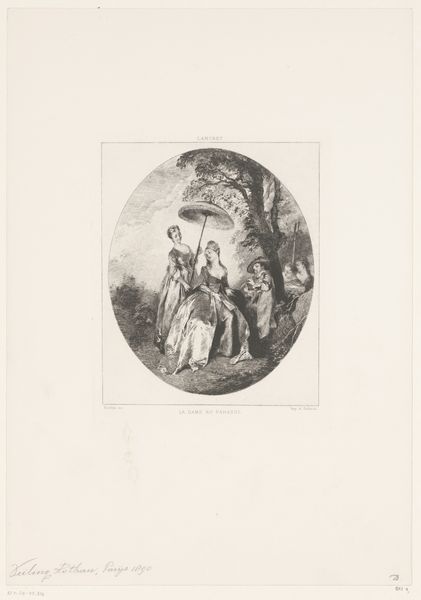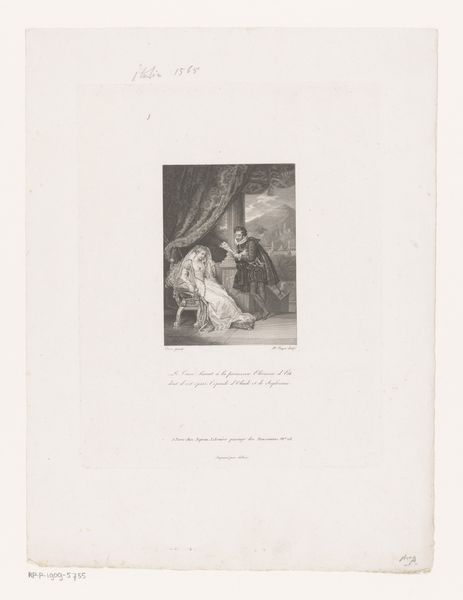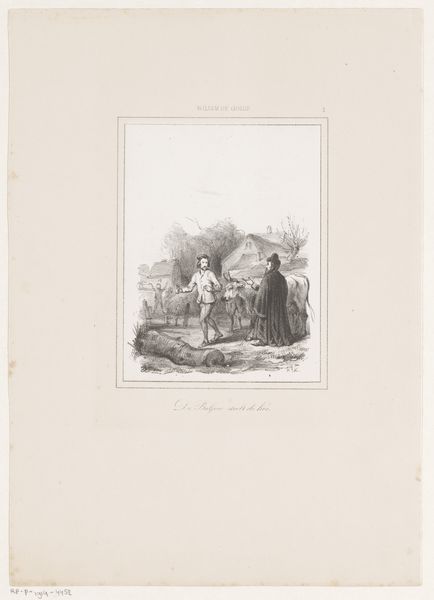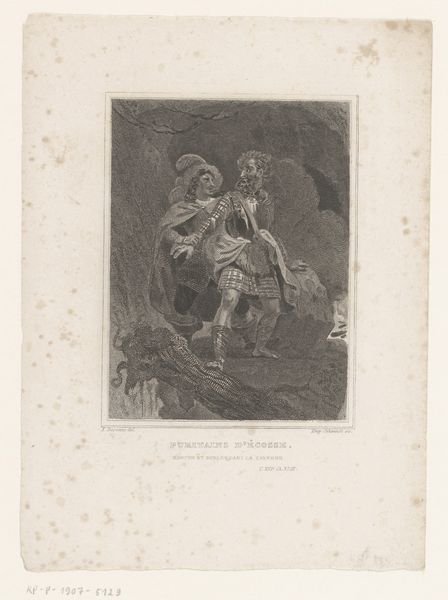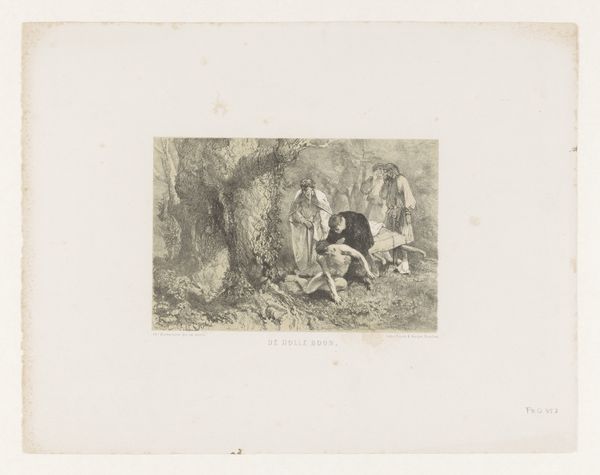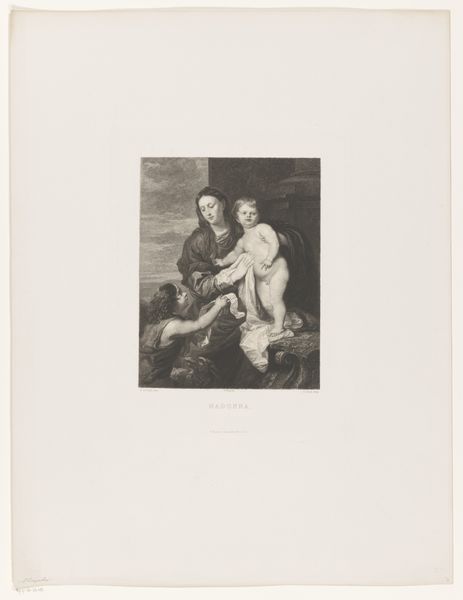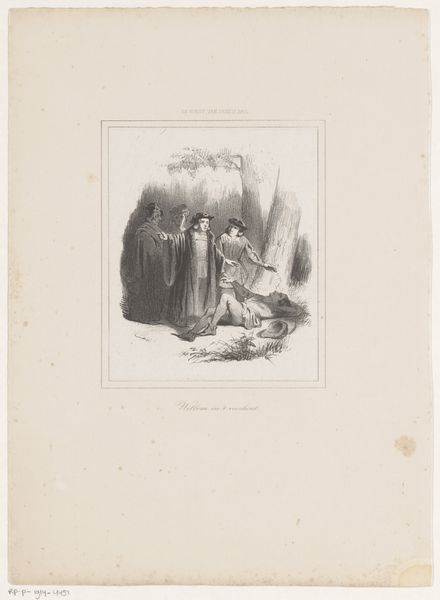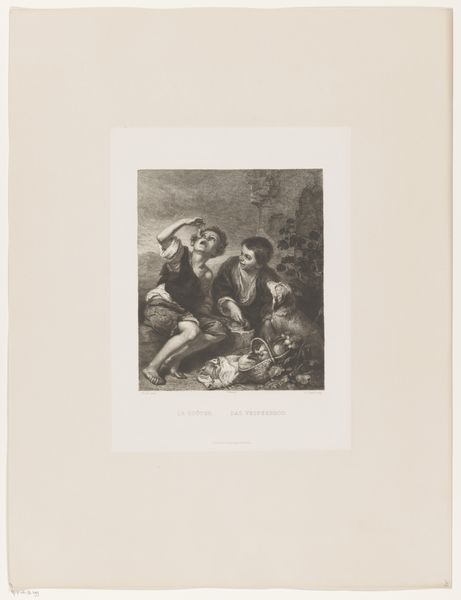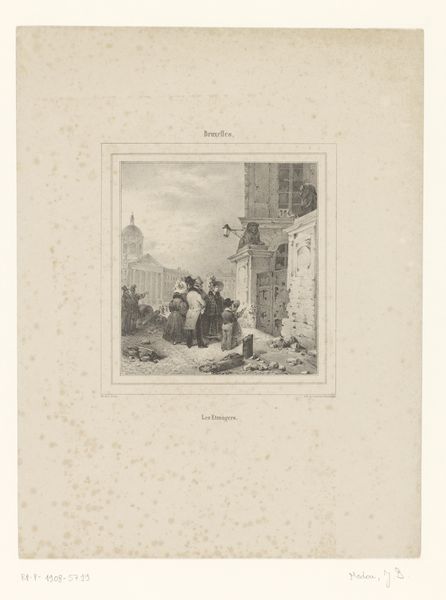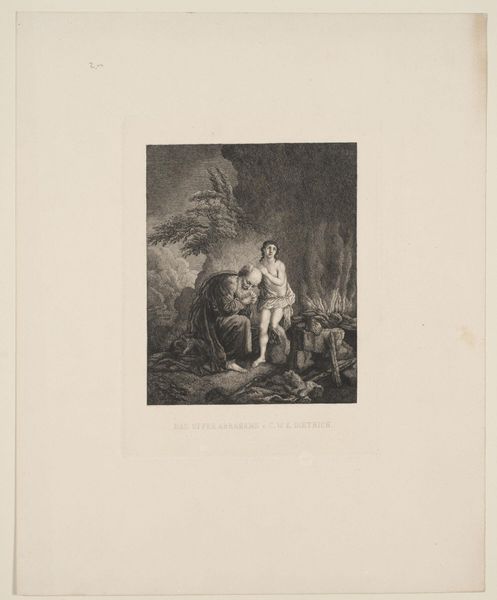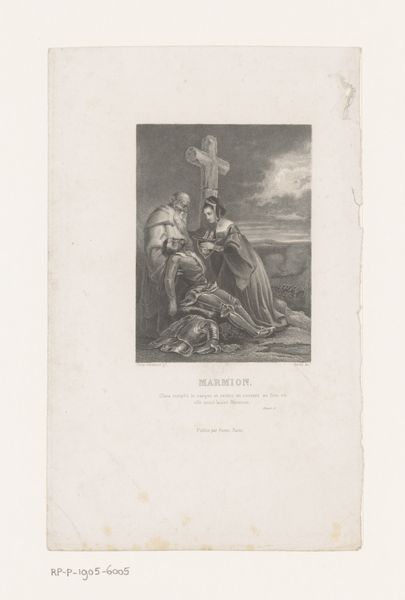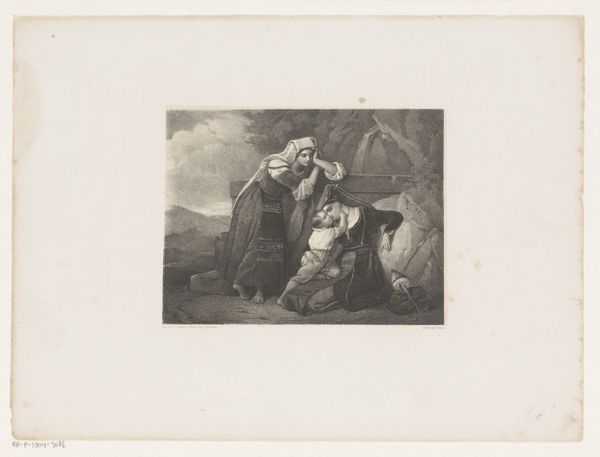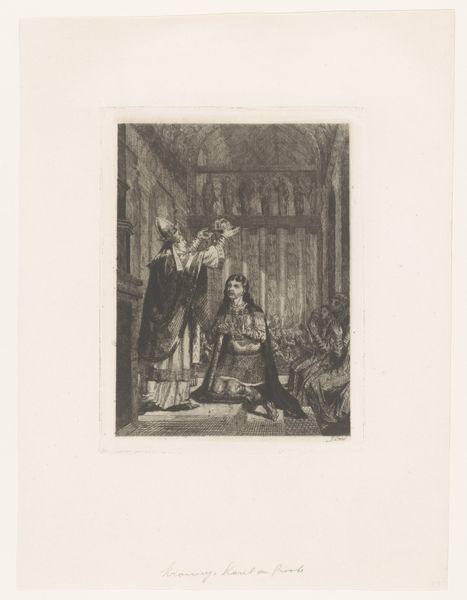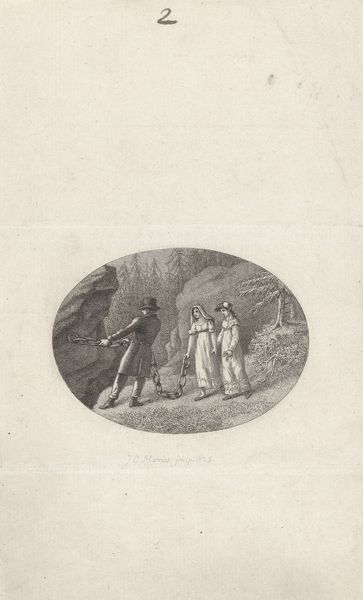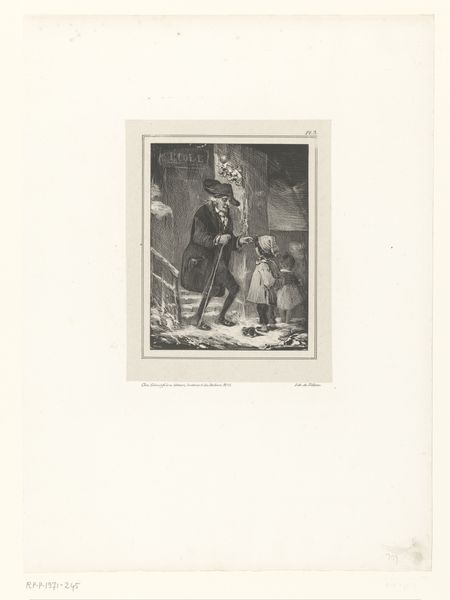
Dimensions: height 290 mm, width 202 mm
Copyright: Rijks Museum: Open Domain
Johannes de Mare made this print of a man and two ladies by a rocky coast sometime in the 19th century. As a print, it’s a work of reproduction, a copy of an image. Look closely and you’ll see the surface is alive with tiny dots and lines. These textures weren’t drawn by hand; they were achieved through a mechanical process. Perhaps etching, engraving, or aquatint. These techniques were used to make multiple copies of an image quickly and cheaply. Notice how the figures are placed in front of a Dolmen? The artist is using a picturesque landscape as a backdrop for a romantic encounter. Prints like this one were often made for mass consumption, sold as illustrations in books or as individual prints to be framed and hung on the wall. They were a product of the Industrial Revolution, made possible by new technologies and new forms of labor. By understanding the materials and processes used to create this print, we can better understand its place in the history of art and its relationship to wider social and economic forces.
Comments
No comments
Be the first to comment and join the conversation on the ultimate creative platform.
